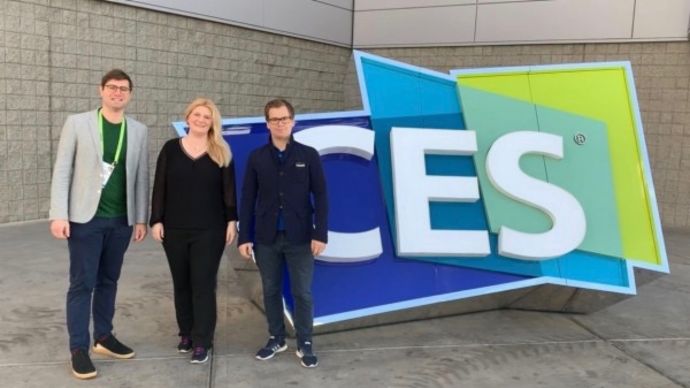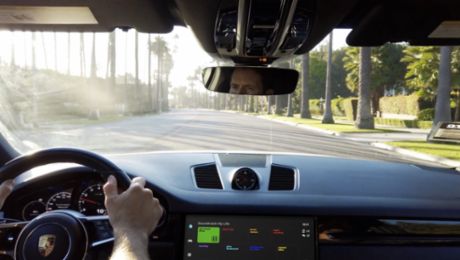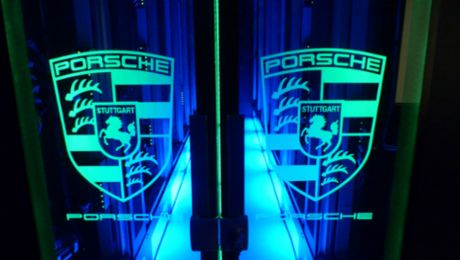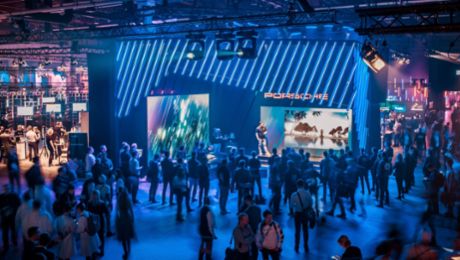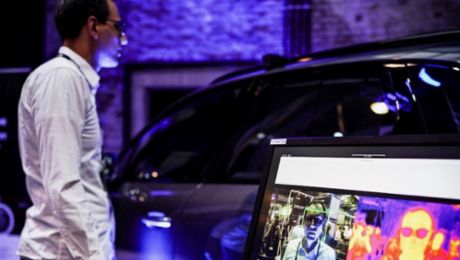Early each year, CES sets the tone for the upcoming year. Sometimes it’s a big buzz, other times it’s showcasing the evolution following the big buzz. Neither is good nor bad, and the cycle of innovation versus maturation is perfectly natural.
This year, certainly the latter was the case: We have seen many technologies evolving from technical prototypes in 2018 to real business cases in 2019. To illustrate this, we have picked three key trends from CES 2019, which will likely transform the automotive industry in the upcoming years.
Automated Driving
At last year’s CES, many of our Porsche colleagues took an inspiring ride in one of the self-driving vehicles developed by Aptiv. Since May 2018, Lyft users in Las Vegas — once they are lucky and a car is around — are able to book a ride from A to B using the Aptiv fleet of over 30 autonomous vehicles.
Now, in 2019, we were impressed by the constant progress Aptiv has made. Already in January 2018, we have seen no driver intervention and the ride felt fluent and safe. Now, in 2019, even in tricky situations, the vehicle behaved as a human driver would, and even showed a sense of tenacity when other drivers tried to squeeze into the lane.
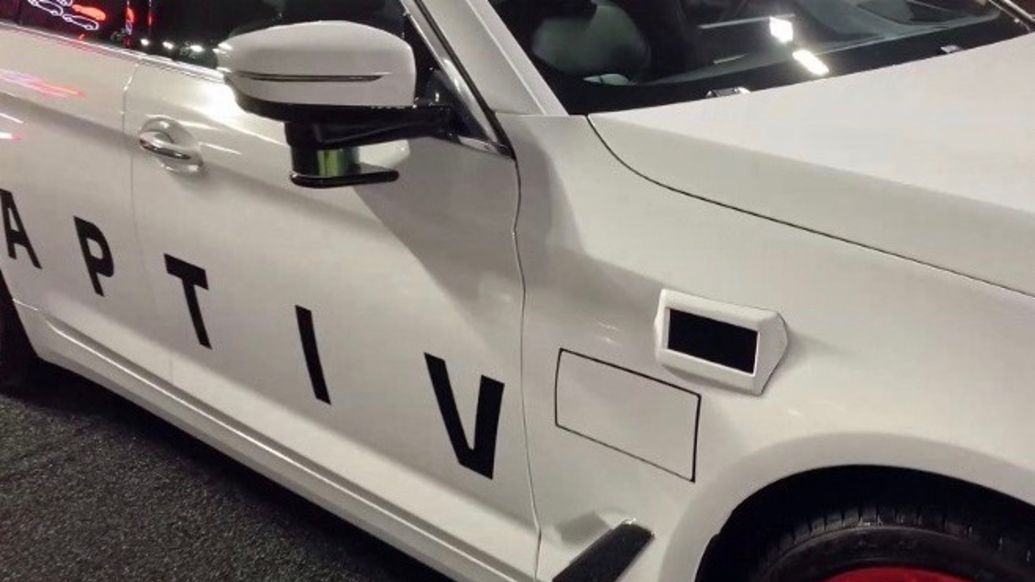
Having seen progress in self-driving hard- and software over the past years, this year’s CES has made it obvious that business models will follow quickly upon technical progress. This is not only true for Aptiv’s Lyft collaboration, but also for competitors like Waymo und Uber, which are constantly expanding their self-driving fleets.
Data Marketplaces and Privacy
In 2018, the buzz around Artificial Intelligence reached its temporary climax — sometimes overpromising, but often engaging and mind-blowing. Now, AI and data analytics have almost reached the plateau of productivity, becoming an essential toolset for the automotive industry.
CES 2019 has been all around the business cases of AI and the giant amounts of data that vehicles, humans, and other entities generate. The promise is big: In the near future, OEMs will buy and sell their (non-differentiating) data to each other. Aggregating and selling data, for example on street condition or weather, will thus be a new pillar in the business models of OEMs.
Therefore, the race for the leading platform has begun with Continental, HERE, Trillium, and others introducing their upcoming products. The emergence of new data-driven platforms however raises the question of privacy, data security, and trust. This is especially the case for extremely sensitive automated vehicle data, which will likely be shared between insurances, OEMs, and Tier1’s in the future.

Emerging concepts like differential privacy, secure enclaves for data processing, federated learning, and blockchain have the unique chance to fill this gap. Apple has recently promoted privacy and trust to a unique selling point of their products. And — although not being an exhibitor at CES — the company plastered Las Vegas with huge banners titling “What happens on your iPhone, stays on your iPhone”. At Porsche, we see this development very positively and actively engage in the development of such privacy- and trust-preserving technologies.
The Emergence of Shy Tech
“The most profound technologies are those that disappear, they weave themselves into the fabric of everyday life until they are indistinguishable from it.” Mark Weiser
This famous quote by Mark Weiser from the 1980’s emphasizes the emergence of Shy Tech in the past years. The future of autonomous cars combines clean chic with new functionalities based on advanced materials. Technology is integrated with passive materials like wood, leather and fabric, and only appears when needed. A great example are Continental’s “Morphing Controls”, with physical buttons vanishing in a sleek leather surface, or Panasonic’s touch displays shining through an elegant wooden panel.
Especially in 2019, it feels like almost every inch of a car will somehow feature a display — in individual mobility, as well as people movers. New display technologies like rollable and foldable displays (e.g. LG’s new plastic OLED display) could transform the user interaction. The increasing possibilities and functionalities are often overwhelming for customers and developers. Therefore, the challenge lies in preserving the shyness of a user interface, and making clever use of other modalities like speech.
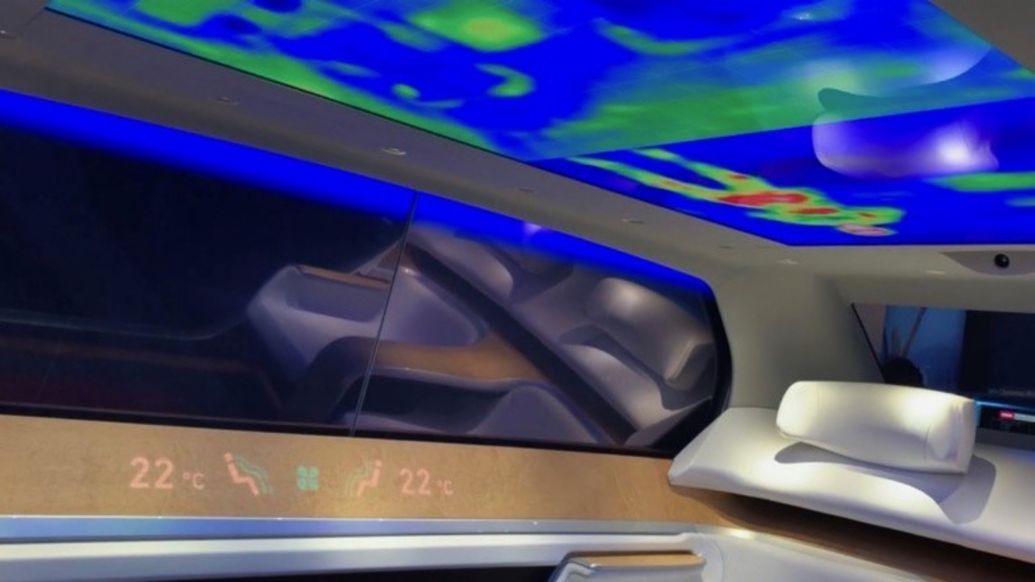
Collaborations between OEMs and startups are more important than ever
CES 2019 also showed that the potential for automotive innovations goes beyond the portfolio of well-established OEMs and Tier1’s. Few industries have been disrupted as much as the automotive sector in the last few years, especially when thinking about (former) startups like Uber, Lyft, and Tesla.
Open Innovation — showcased by numerous OEMs this year — has become a widely-accepted approach in which companies harness innovation by tapping outside potential. We can see companies building innovation outposts around the globe, get involved in incubators and accelerators, send tech scouts out to the world, and connect with researchers, entrepreneurs, and venture capital funds.
We think that the increasing collaboration in the automotive sector is beneficial for everyone: Startups can prove their technologies and corporates can source innovation with new collaboration models that will shape the future of the automotive industry.
Our Take-Away
This year’s CES has shown the evolution from tech-driven innovation to innovative business models. Besides automated driving, shy tech, data marketplaces, and startup collaborations, this is also the case for our (non-automotive) highlight: IBM’s introduction of the first commercial 20-qubit quantum computer. These, and the numerous other developments we have seen at CES, will make 2019 an inspiring, innovative, and exciting year for Porsche.
Authors
An article by Tobias Grosse-Puppendahl (Innovation Manager Electrical/Electronic Engineering at Porsche AG), Andy Grau (Innovation Manager Purchasing) and Christina Ensslin (Innovation Manager Porsche Exclusive). To find out more, follow us on Twitter, LinkedIn and Instagram.
